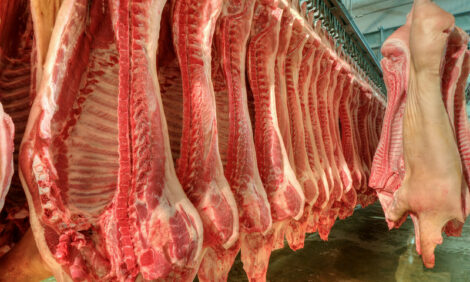



Presence of rotavirus and C. suis increases from birth to six weeks of age in Swedish pig farms
New research investigates the prevalence of two important pathogens in suckling and early post-weaned piglets in systems with solid floors and age-segregated rearing.The study, published in Porcine Health Management, was carried out by Swedish researchers, Emelie Pettersson, Sanna Hestad, Ivo Möttus, Eva Skiöldebrand and Per Wallgren, with the aim of documenting the prevalence of both rotavirus and C. suis in Swedish piglets, delivered by sows reared in deep litter systems and raised in pens with at least 70 percent solid floor, during the suckling and early weaning period.
The study conclusions stipulated that "rotavirus can be expected to be present in almost every pig herd in Sweden". The study results also indicated that the number of litters infected with rotavirus increased from birth to six weeks of age. Cystoisospora suis (C. suis) was also frequently found in pig herds but the number of infected litters was stable from two to six weeks of age.
Abstract
Background
Piglet diarrhoea is considered a worldwide problem resulting in animal welfare problems and financial losses for pig farmers. Porcine rotavirus and the coccidian parasite Cystoisospora suis (C. suis) are considered two important pathogens associated with diarrhoea in piglets during the suckling and early post weaning periods. To obtain an overview on the prevalence of porcine rotavirus and C. suis in piglet producing herds with solid floors and age segregated rearing, faecal sampling of 791 litters in 81 farms was performed.
Results
For porcine rotavirus, faecal samples were analysed using a sandwich ELISA. The overall prevalence of rotavirus in the examined herds was 11.4 ± 17.7 percent at two weeks, 56.8 ± 30.7 percent at four weeks and 71.1 ± 29.1 percent at six weeks of age and the accumulated prevalence was 49, 97 and 100 percent. To detect C. suis, faecal samples were analysed using sedimentation. The overall prevalence of C. suis in the examined herds was 11.9 ± 15.1 percent at two weeks of age, 10.7 ± 16.7 percent at four weeks and 8.7 ± 15.3 percent at six weeks of age and the accumulated prevalence was 56, 76 and 85 percent. The number of empty days between farrowing batches did influence the shedding of rotavirus at two weeks of age but not later. Regarding C. suis, no difference in prevalence was correlated to the number of days between consecutive farrowing batches.
Conclusions
Our study confirmed that rotavirus should be regarded as an ubiquitous virus that can be expected to be present in almost every pig herd in Sweden. The study also demonstrated that the number of infected litters increased from birth to six weeks of age. Secondly, it showed that C. suis frequently occurred in pig herds and that the number of infected litters was rather stable from two to six weeks of age. Consequently, both rotavirus and C. suis may play a role in intestinal disturbances in piglets during the suckling and post weaning periods despite age segregated rearing, at least in systems with solid floors. However, as this study was carried out in herds without reported problems with diarrhoea or poor weight gain, the role of these pathogens should not be overestimated.








